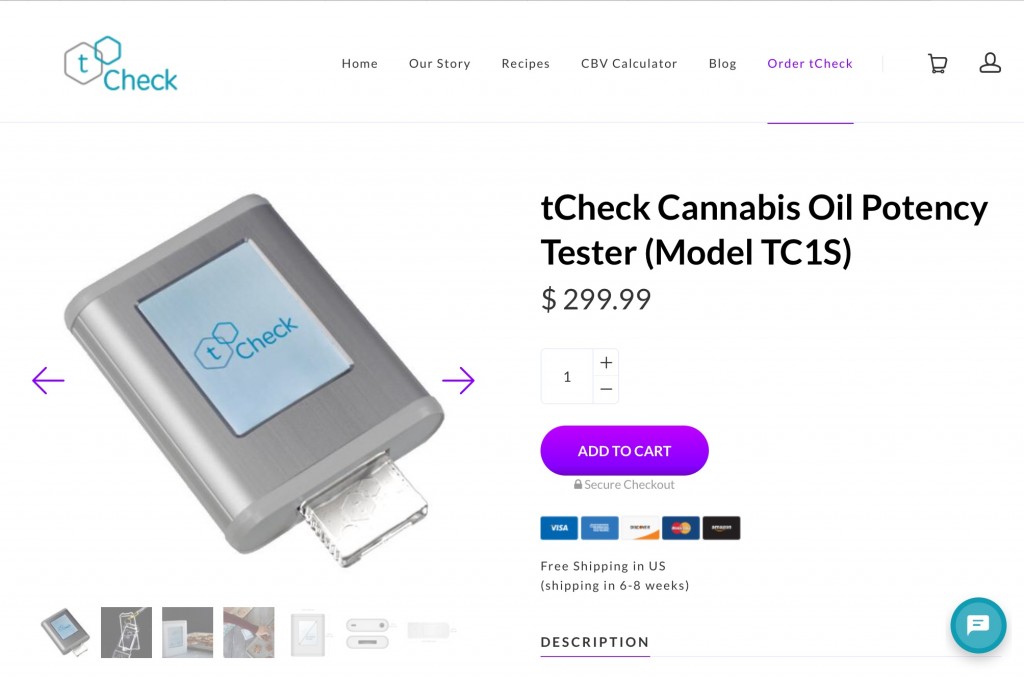SweetSue;3101361 said:I subscribe to a site called "Wake & Bake" run by a delightful cannabis warrior named Corrine. I heartily encourage you to seek her out. She's a ballsy cook who loves her cannabis and has the wickedest sense of humor. I laugh a lot over at her place.
Today she shared her video on her first attempt at making capsules. I cringed all the way through at how much she spilled, but I admire her getting it out there her way and showing that you don't have to be all tight and referenced when you're making your own meds.
I'll share that link later, once I'm sure I can do so without violating site rules. Regardless, if you google her site and "cannabis capsules" I'm sure it'll pop up. You can find her on YouTube as well.
What brought me here now was the device she uses to check the cannabinoid load in her oils. Has anyone come across this, used this, knows of someone who does use it? I haven't been following her closely lately and missed her post on it, so this is the first I've seen it.
Cajun, have you seen this around? Heard anything about it?

The Tech in tCheck
Is it Magic?
Not really. tCheck is an application specific spectrometer. It works by shining a specific wavelength (color) of light through the oil, then measuring the amount of light that makes it through.
You can do this experiment at home... Take a flashlight and put it behind a small glass of water, then look at the flashlight through the water. Now, start dripping dye or food coloring into the water. As more dye is added, the water gets progressively darker.
The water in this experiment is just like our oils and the dye is like the cannabinoids (THC, CBD, etc.). The more cannabinoids in the oil, the darker the water.
Our eyeballs can only detect a limited range of colors (wavelengths). tCheck uses a wavelength of light beyond our ability to see. However, cannabinoids filter or darken the oil at this wavelength.
Inside tCheck, the light emitter, tray, and receiver have all been calibrated. This means that the amount of light generated is always known, the thickness of the oil within the tray, and sensitivity of the detector is also always known. This consistency, along with some fancy signal processing allows tCheck to translate the dimness of the light into what we call a cannabinoids by volume measurement.
Why do we call it an application specific spectrometer? Because it only measures cannabinoids. Regular spectrometers use a bunch of different wavelengths of light and can measure all kinds of stuff like the carbon dioxide content in Himalayan glacial ice. The problem is that it is extremely difficult to tell the difference between 10,000 year old carbon dioxide and some other unknown compound. To definitively tell the difference, you must collect a ton of data across a wide range of wavelengths and compare those numbers against a massive database. Even then, it is difficult to determine the amount of carbon dioxide in Himalayan glacial ice.
tCheck does not try to measure anything and everything. It only measures the cannabinoids dissolved in oils (and tinctures in the near future). Because it is not a general purpose spectrometer, it doesn’t need to make a million measurements and host a gigantic database. By doing only a single function, the electronics inside could be miniaturized.
If this does what it says it does this is a must have, wouldn't you think? Hmmmm.......
Navigation
Install the app
How to install the app on iOS
How To Use Progressive Web App aka PWA On 420 Magazine Forum
Note: This feature may not be available in some browsers.
More options
You are using an out of date browser. It may not display this or other websites correctly.
You should upgrade or use an alternative browser.
You should upgrade or use an alternative browser.
THC Analyzer
- Author SweetSue
- Create date
SweetSue;3101361 said:
Blog entry information
More entries in Member Blogs
-
Is Cannabis Market Transforming into a Fast-Moving Consumer Goods (FMCG) Sector?Traditionally, the global cannabis consumption market was viewed mainly as a raw material...
-
The Rise of Skate Vape: A New Design Trend in Cannabis ConsumptionAs the cannabis vaping market continues to evolve, new product trends are emerging that push the...
-
Why the Vape with Screen is Gaining Popularity in Cannabis?The cannabis vaporizer industry is evolving rapidly, and one trend that has gained significant...
-
How to Choose the Right Cannabis Vape with A Screen for YouAs the cannabis industry rapidly evolves, the competition among suppliers has intensified...
-
Why Are More Cannabis Brands Introducing Vapes with Screen Display?As the cannabis industry rapidly evolves, the competition among suppliers has intensified...
More entries from SweetSue
-
AKgramma's Old School Tincture RecipeThe original post: SweetSue's Cannabis Oil Study Hall


